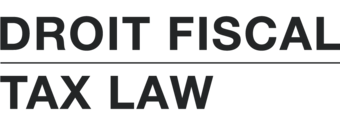
Photo by Danny Meneses
In ascertaining what constitutes SR&ED, the Canada Revenue Agency (“CRA”) goes through five considerations derived from the case law:
- Was there a scientific or technological “uncertainty” that could not be removed by standard practice?
- Did the effort involved in formulating hypotheses specifically aimed at reducing or eliminating that uncertainty?
- Was the adopted procedure consistent with the total discipline of the scientific method, including formulating, testing, and modifying these hypotheses?
- Did the process result in a scientific or a technological advancement?
- Was a record of the hypotheses tested and the results kept as the work progressed?
6398316 Canada Inc. (“6398316”) v. The Queen[1]
6398316 claimed expenditures incurred in connection with the construction of a house intended to be “uniquely energy efficient” while staying within the price range of a “regular home”. The “aspects of the project upon which the SR&ED claim was based were various natural force interactions such as thermal mass, thermal bridging, passive cross-ventilation, passive heating and cooling, and air sealing.”[2] The CRA denied the expenditures on the basis that they were not “SR&ED”.
On the issue of technological uncertainty, there was none related to the various aspects of building a new house. Rather, the “technological advance” put forward by 6398316 was the ability to achieve energy efficiency at a lower cost. Russell J. stated that a hypothesis specifically aimed at reduction of a cost or price misses the criterion established in Northwest Hydraulic, which requires a “technological uncertainty”. Russell J. further took aim at the lack of record keeping and data at the core of the scientific method. In essence, he concluded that the work performed by 6398316 was “routine engineering” that lead to no “new knowledge of a technological nature”. He therefore dismissed the appeal.
It is worth noting that the parties did not call any expert witnesses. Only one fact witness testified, and it was 6398316’s president.
Allegro Wireless Canada Inc. (“Allegro”) v. The Queen[3]
Allegro created software for industries that “were underserved from a software perspective. It focused on providing a software platform that allowed its clients to communicate remotely with their workers.”[4] This communication was done through wireless hand-held devices with LCD screens that its clients’ workers used to remotely access their employers’ computer systems. The platform had to work seamlessly with a multitude of devices that used different operating software and ran on the various operating systems. It was a product that had not previously existed.[5]
D’Arcy J. found that, when developing its software, the taxpayer faced numerous technological challenges that required that it find solutions. He relied on the testimony of the taxpayer’s expert witness to find that the works conducted by the taxpayer were SR&ED.[6]
With respect to the first three projects, he stated:[7]
The three projects required the Appellant to conduct tests and experiments, in a difficult environment, to find new solutions that would allow all of the software components to execute in the manner the Appellant required in order for it to develop and improve a product that would meet the needs of its clients. Those solutions could not be found by routine engineering. It was work that the Appellant undertook for the purpose of achieving technological advancements that would allow the Appellant to create a new and/or better product. This product was a platform that would work with multiple devices in the environment described by Mr. Rupel.
With respect to the fourth project, he stated:
I accept Doctor Penn’s conclusion that the part of 2010 Project 2 identified by the CRA as TA3/TO3 supported the other portions of 2010 Project 2 in such a way that it contributed to the overall aims of an experimental development project. In other words, I accept that the Appellant’s work on this part of 2010 Project 2 was experimental development.
D’Arcy J. noted that the taxpayer had numerous systems in place to record the various hypotheses it made when conducting its research. Specifically, he concluded that when the taxpayer “conducted the projects at issue, it formulated hypotheses specifically aimed at reducing the identified technological uncertainty, followed appropriate procedures on testing, including the formulation, testing, and modification of hypotheses, and maintained a detailed record of the hypotheses tested and results achieved as the work progressed.”[8] D’Arcy J. allowed Allegro’s appeal.
Allegro called three fact witnesses and one expert witness. The CRA called one fact witness and two expert witnesses. Whereas D’Arcy J. found that all four fact witnesses were credible, he only relied on the evidence of the taxpayer’s expert witness. In contrast with the taxpayer’s expert witness, who demonstrated a thorough understanding of all the facts, the two experts of the CRA lacked that same broad understanding. Their reports were based on insufficient information and they had “insufficient understanding” of Allegro’s “business, products or procedures that would allow them to give opinions that would help the Court.”[9]
SR&ED cases are often a battle of experts. There is no doubt that in this appeal, the taxpayer’s expert had the upper hand.
How a work is performed is central to the determination of whether it constitutes “SR&ED”. If there is some potential for a work to be considered SR&ED, a process should be put in place as soon as possible to delineate the scientific or technological uncertainty, to formulate the hypotheses, and to monitor the progress of the work in keeping with the scientific method.
[1] 2021 TCC 17.
[2] Para. 13.
[3] 2021 TCC 27.
[4] Para. 13.
[5] Para. 194.
[6] Para. 200.
[7] Para. 202.
[8] Para. 208.
[9] Para. 99.
